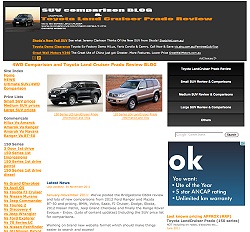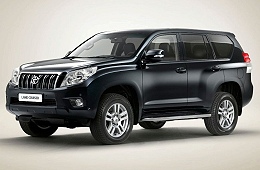 Mitsubishi Triton |
VS |  Mitsubishi Challenger |
Welcome to the Mitsubishi Triton Vs Mitsubishi Challenger comparison and review (2012 version). We put this page together because both cars are directly related and unique to this market. Namely the Challenger SUV is a wagon version of the Triton ute and vice versa. It wan’t like this in the 1990’s where all Japanese manufacturers made wagon versions of their tray back utilities/commercials. Can you remember the Forerunner and the Hilux or the Nissan Pathfinder and the Navara? Very popular variants in the day.
Aside from the wagon body there are very few changes to the specification. The only this of significance is the rear suspension on the Challenger. Both are not the most refined or quiet SUVs on the road which is a pity because the space age exterior still looks great after so many years. The interiors are essentially identical with ‘car like’ luxury trim fitted to the Challenger to make it more chintzy and not luxurious. Admittedly the Challenger feels more refined.
The Triton/Challenger engines and gearbox are dated but clearly hard hard wearing but the noise on the outside is old school and the interior is not much better. We have only heard of a few problems with the engines and it only applies to the diesel versions. It seems to be a trend with all manufacturers of diesel engine these days..
Aside from that both are pretty decent cars to drive around. The Challenger in particular is the only hard core 4WD in the medium sized SUVs. The base model rear drive only Challenger in particular is very good value if you want a tough towing vehicle.
|
|
|
| Mitsubishi Triton | HMitsubishi Challenger/Pajero Sport |
 |
 |
| Engines | |
|
4G64 4D56
|
4D56 Variant 6G74 Variant??? 4M41 Variant??? |
| Weight | |
|
From 1672Kg |
Kerb weight 2055Kg |
| Fuel capacity & consumption | |
|
Up to 75 litres |
70 litres |
| Other specifications | |
|
5 or 4 speed Auto |
5 spd Auto or 5 speed manual |
| Capability | |
|
Angle of: (degrees) |
Angle of: (degrees) |
| Performance | |
| Pricing | |
|
2012 FROM $38,900 AUD |
2012 $36,990 (2WD only) – $57,190 (4WD) 2011 $36,990 (2WD only) – $57,190 (4WD) 2010 $44,490 – 56,390 AUD (4WD) |
|
|
|



